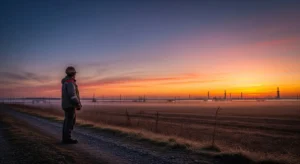In every corner of the working world—whether it’s a bustling construction site, a quiet laboratory, a busy hospital, or a factory floor—workers show up each day with the simple expectation that they will return home safe and sound. This expectation, once taken for granted or too often ignored, is now backed by a powerful force: the Occupational Safety and Health Administration (OSHA).
But why is OSHA necessary? The answer lies in the stories of those who once worked without protection, in the progress we’ve made, and in the promise of safer workplaces for generations to come.
A Wake-Up Call from the Past
Before OSHA was established in 1970, American workers faced staggering levels of risk. Jobs that seemed routine—repairing a roof, working on an assembly line, cleaning with industrial chemicals—could become deadly. Each year, thousands of workers lose their lives, and millions are injured or sickened due to hazardous work environments. Safety laws were weak, inconsistent, and often unenforced. Many workers had no voice to raise concerns and no protection if they did.
The Occupational Safety and Health Act changed all that. With it came OSHA: a federal agency with a clear mission—to ensure safe and healthful working conditions for every worker in the United States.
OSHA’s Mission
At its core, OSHA’s mission is straightforward: to ensure safe and healthful working conditions for working men and women by setting and enforcing standards and by providing training, outreach, education, and assistance.

This mission unfolds in several ways:
- Setting Safety Standards: OSHA develops and updates regulations that cover a wide range of workplace hazards, chemical exposure, machine guarding, fall protection, electrical safety, and more.
- Conducting Inspections: OSHA conducts routine and targeted inspections to verify adherence. Employers who violate safety standards may face citations, fines, and legal consequences.
- Training and Outreach: OSHA also plays an educational role. Through training programs, partnerships, and guidance materials, OSHA empowers both employers and employees with the knowledge to stay safe.
- Employee Rights: Importantly, OSHA gives workers the legal right to a safe workplace. They can file complaints, request inspections, and report hazards without fear of retaliation.
Saving Lives and Preventing Injuries
Since OSHA’s inception, workplace fatalities and injuries have dropped significantly. According to OSHA data:

- Workplace fatalities have declined by over 60%
- Occupational injury and illness rates have decreased by more than 70%
These improvements are not coincidental. They result from the implementation of enforceable standards, better training, increased awareness, and ongoing monitoring. For example:
- Fall protection standards in construction have saved countless lives by ensuring that workers at heights use harnesses and guardrails.
- Hazard communication standards help employees understand the risks associated with chemicals and how to handle them safely.
- Respiratory protection rules have become even more critical post-COVID-19, protecting workers in industries ranging from healthcare to construction.
Promoting a Culture of Safety
Beyond tangible metrics, OSHA plays a key role in shaping workplace culture. Safety is no longer an afterthought or an optional consideration—it’s a core part of operations for any responsible employer.
OSHA helps companies adopt a proactive approach. Instead of responding to accidents after they happen, businesses are encouraged to perform risk assessments, train their employees, and establish safety plans. This preventive mindset reduces costs, improves productivity, and boosts employee morale.
When workers feel safe, they are more engaged and productive. High safety standards also enhance a company’s reputation, helping it attract and retain talent.
OSHA's Role in Evolving Work Environments
The nature of work is changing. With the rise of remote work, gig economy jobs, advanced machinery, and emerging industries, new risks are surfacing. OSHA’s adaptability is essential.

For example, OSHA has developed guidance on:
- Heat-related illnesses, especially for outdoor and warehouse workers
- Workplace violence prevention, especially in healthcare and retail
- COVID-19 response, helping businesses implement safety protocols like masking, ventilation, and testing
The agency is also exploring issues like mental health, ergonomics in remote setups, and AI-powered machinery safety, proving its continued relevance in a dynamic world.
Protecting the Most Vulnerable
Not all workers face equal risks. Some industries—like construction, agriculture, healthcare, and manufacturing—are inherently more dangerous. Moreover, vulnerable populations such as immigrants, temporary workers, and non-English speakers often bear the brunt of unsafe conditions.
OSHA recognizes this disparity. It provides multilingual resources, strengthens whistleblower protections, and partners with community organizations to reach underserved populations. Ensuring that every worker, regardless of background or job type, is protected is central to OSHA’s purpose.
Economic and Legal Importance
Some critics argue that OSHA regulations can be burdensome for employers, especially small businesses. But in reality, a safe workplace is also a smart investment.
Workplace injuries and illnesses cost employers billions annually in compensation claims, lost productivity, and legal expenses. A strong safety program, built with OSHA guidance, helps reduce these costs.
Additionally, legal adherence with OSHA standards shields employers from lawsuits and sanctions. It also builds public trust and ensures long-term sustainability.
When OSHA Steps In
When violations occur or accidents happen, OSHA responds. This enforcement function is critical. It holds employers accountable and prevents repeated negligence.
Through inspections, fines, and corrective actions, OSHA ensures that the law has teeth. But enforcement isn’t just about punishment—it’s also about education and improvement. OSHA works with employers to help them correct issues and create lasting change.
A Future-Focused Approach
As the world continues to face challenges like climate change, pandemics, automation, and supply chain disruptions, workplace safety must evolve. OSHA’s continued investment in research, stakeholder collaboration, and policy reform ensures it stays ahead of emerging risks.
Initiatives like the Safe + Sound Campaign and National Safety Stand-Downs promote a national dialogue on safety. These efforts help foster a collective responsibility that transcends legal adherence—it becomes a moral imperative.

Conclusion
OSHA is not just a regulatory body; it’s a lifeline for millions of American workers. By enforcing standards, offering education, and championing worker rights, OSHA has transformed the American workplace from a high-risk environment into a safer, more humane space.
Its presence ensures that no worker has to choose between their health and their paycheck. In a world where efficiency often takes precedence, OSHA reminds us that people always come first.
From construction sites to hospitals, from warehouses to offices, OSHA is not just necessary—it is indispensable.





